CO 6, CO 7, CO 8, CO 9, CO 10, CO 11, CO 12, CO 13, CO (GB) 14, Arka Jay and Arka Vijay.
CO 1, CO 2, CO 3, CO 4, CO 5 and Pusa Early Prolific.
Soil-
Well drained loamy soil with pH range of 6.5-8.5 is required.
Climate –
It can be grown in tropical and subtropical region. But, it is susceptible to frost and very high temperature.
Bush type – Throughout year;
Pandal type – July – August.
Immediately after sowing and on 3rd day, thereafter once a week.
(a) Basal dressing for bush type
Manures and fertilizers Irrigated Dry
N 12.5 t/ha 12.5 t/ha
P 25 kg/ha 12.5 kg/ha
K 50 kg/ha 25 kg/ha
– –
b) For pandal type
Bush type
Basal soil application of 25kg ZnSO4 + 10kg Borax per ha 25kg FeSO4/25kg
MnSO4/5kg CuSO4 per ha if the soil is deficient in the particular micronutrients
Pandal type
25 kg of ZnSO4 + 10 kg Borax as basal soil application
1.Gram pod borer: Helicoverpa armigera
| ||||||||||||||||
Management
| ||||||||||||||||
7.Leaf hopper: Empoasca kerri
| |
Management:
| |
8.Pod bugs: Riptortus pedestris
| |
Management: Spray any one of the following insecticides (Spray fluid 500 l/ha)
| |
9.Lab lab bug or Stink bug: Coptosoma cribraria
| |
Management-
| |
10.Whitefly: Bemisia tabaci
| |||||
Management of sucking pests
|
1.Boron
Deficiency Symptoms
Appearance of curled and crinkled leaves.
Correction Measure
Foliar spray of Borax 0.2%
2.Iron
Deficiency Symptoms
Upper leaves light yellow to white veins remain green.
Correction Measure
Foliar spray of FeSO4 0.5%.
3.Zinc
Deficiency Symptoms
Correction Measure
Soil appln. of 5-10 kg ZnSO4 / ha or foliar appln. of 0.5% ZnSO4.
1.Alternaria leaf spot: Alternaria tenuissima

| Symptom | |||
Management
2. Anthracnose/pod blight: Colletotrichum truncatum
| |||
3.Bacterial blight: Pseudomonas syringae pv. glycinea

| Symptom | |
Management
| |
4.Cercospora leaf blight, leaf spot and Purple seed stain: Cercospora kikuchii
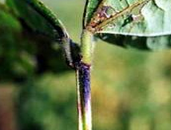
| Symptom | |
Management
| |
5.Charcoal rot, ashy or stem blight or dry root rot: Macrophomina phaseolina
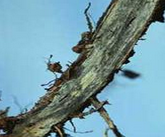
| Symptom | |
Management
| |
6.Collar rot / Sclerotial blight: Sclerotium rolfsii.
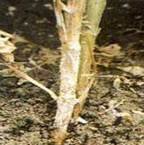
| Symptom | |
Management
| |
7. Frog eye leaf spot: Cercospora sojina
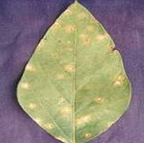
| Symptom | |
Management
| |
8.Rhizoctonia aerial blight / Web blight: Rhizoctonia solani
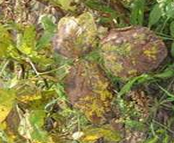
| Symptom | |
Management
| |
9.Soybean mosaic: Bean mosaic virus (SMV) belongs to Poty virus
Symptom
| |
Management
| |
10.Yellow mosaic: Mung bean yellow mosaic virus (MYMV)
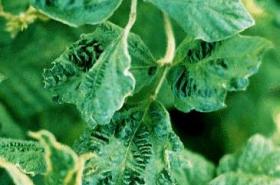
| Symptom | |
Management
| |
Bush type can be harvested two months after sowing. But pandal type takes three
months after sowing
Pandal type: 12 – 13 t/ha
Bush type : 8 – 10 t/ha
Crop growing districts Dindigul, Erode, Salem, Theni
Major markets in Tamil Nadu Periyar Vegetable Market, Koyambedu, Chennai Gandhi Market, Oddanchathiram, Natchipalayam vegetable market, Coimbatore
